Why Little Vehicles Will Conquer the City

Nearly all of them look silly, but if taken seriously, they could be a really big deal for urban transportation.
The public reaction to the arrival of dockless bikes and electric scooters in U.S. cities can be tracked in stages. The first stage, for many, was annoyance. Who were these grown men and women on candy-colored bikes and teeny kick-scooters speeding down the streets and sidewalks, menacing walkers and leaving their rented toys all over the place? Especially in San Francisco, where this whimsical new mobility mode has taken off, scooters have come to represent yet another example of tech industry entitlement, another way for a startup to move fast and break stuff.
In response, many a Twitter urbanist has used this backlash to point out the relative danger and disruption of larger dockless vehicles:
The second stage is epiphany, when the reluctant first-time user—out of curiosity or journalistic responsibility—actually tries a dockless bike or e-scooter and realizes that they are not only a visual counterpoint to the bulk and terror of cars, but a delightful and crazily practical alternative to them.
That leads to stage three, if it comes: mass adoption.
Call them Little Vehicles—not just bikes and scooters, but e-bikes, velomobiles, motorized skateboards, unicycles, “hoverboards,” and other small, battery-powered low-speed not-a-cars. Nearly all of them look silly, but if cities take them seriously, they could be a really, really big deal. Little Vehicles could significantly erode private car and ride-hail use, and play a key role in helping cities achieve their as of now unattainable environmental and road safety goals.
Getting to mass adoption will require Little Vehicles for all seasons, for all sorts of trips, and for all types of people. Solutions to these obstacles exist, and many more will surely be dreamed up. The bigger challenge will be de-conditioning ourselves out of the belief that cars—whether privately owned or for hire—are the default mode of transportation in dense cities.
This, of course, has been the urbanist’s dream since the days of Jane Jacobs and the post-war car boom. What’s changed is the technology (improved battery life has made today’s crop of tiny e-boosted contraptions far more usable), the economics, and, perhaps, the political will for human-centered infrastructure. Often cheaper, faster, and more fun than a car, Little Vehicles could provide the critical mass that finally drives the automobile to its knees in America’s big cities.
Like a car, but littler
Regular old bicycles, not just the colorful shared kind, are the OG LV, and to them all subsequent Little Vehicles should pay tribute. But the two elements that could make Little Vehicles a more viable mode for the masses—electrification and heterogeneity of vehicle designs—represent evolutionary changes to the long-static bike concept. Electric motors, recumbent or stand-up postures, and protective shells could eventually give just about everyone, not just the fit and fearless, the opportunity to discover the freedom, fun, and affordability that the urban cyclist sweats and swerves for.
“The electric scooters and electric bikes are going to get people to try these things, but then… they’re going to start finding these alternatives,” said Terenig Topjian founder of Have a Go, which aspires to be the Consumer Reports of LVs. The site divides these vehicles, all of which boast electric power, into three categories based on size, ranging from unicycles and motorized skateboards, to folding bikes and scooters, to enclosed velomobiles and featherweight cars.
These products are definitely not toys. Most cost at least $1,000, and many rival the price of an older used car. But for some urban motorists, once parking, gas, tolls, insurance, and maintenance get tossed in, they can be a money-saver compared to car ownership (or frequent Ubering). “If you have that one- to two-mile last mile problem, and it becomes your primary mode, it just makes sense to buy one,” Topjian said.
One of the vehicles Have a Go recommends is URB-E, which makes an e-scooter that’s more practical for daily use than the shared scooters currently on city streets. The 30-pound vehicle is ridden from a seated posture, and can fold up to be carried or pushed like a wheelie backpack. All models are compatible with a metal basket accessory that can be used as a cart at the grocery store. They’re particularly handy for train and subway commuters: A third of owners report taking their URB-E on mass transit with them, said Evan Saunders, the company’s head of sales and marketing.
Rather than feeling threatened by the venture capital and hype raining down on the dockless sector, URB-E and other for-sale Little Vehicle companies seem confident in their respective niches, and are poised to capitalize on the growing acceptance of this transportation mode. “The fact that this is all occurring in the scooter space is a strong message that transportation in the urban environment is rapidly changing, and that the public is readily adapting to a variety of systems,” said Rob Cotter, founder and CEO of Organic Transit.
Cotter is the inventor of the ELF, which stands for electric, light, and fun. It’s a velomobile—a recumbent, electrically boosted tricycle-car that’s covered in a protective plastic shell. Legally, it can traverse roadways or bike lanes. Lights, turn signals, and (optional) doors make night and poor-weather travel more car-like and comfy, while a solar panel on the roof can keep the battery topped up while parked. It also has a somewhat car-like list price: Around $9,000.
The Easter-egg-like ELF might be the most adorable Little Vehicle on the market. But it also addresses a number of safety and practicality issues that have kept people roped into car payments. The ELF 2FR can carry 500 pounds of cargo and can seat two adults, or one adult and two children. In the millions of miles ridden since its 900 units sold, no one has been seriously hurt, Cotter said.
Cotter dreamed up the ELF while working as a consultant for New York City’s CitiBike bikeshare system. “It dawned on me that if New York City is putting in 300 miles of bike trails then there’s a market for a different kind of bike,” he said. “One that keeps you out of the rain, provides greater safety, allows you to carry passengers and cargo, gets you up the hill without sweating.” Another way he described his vision: “How close can we come to getting what we needed from a car, without being a car?”
According to the Federal Highway Administration’s National Household Travel Survey, nearly half (45.6 percent) of all vehicle miles traveled by car in 2017 were on trips of less than three miles. Significant portions of those trips were in vehicles with multiple passengers, including children, the elderly, or disabled people. Other motorists were lugging cargo or traveling through difficult terrain or bad weather. But many, many others were taken by a lone, able-bodied person, carrying a purse or backpack sized load of stuff through a flat, urbanized area in ideal weather conditions.
For many of these kinds of trips in cities, Little Vehicles would be faster than travel by car, especially during periods of heavy traffic. LVs can achieve substantially greater “throughput,” a wonky word for the number of vehicles that can move through a space over a given amount of time. The National Association of City Transportation Officials (NACTO) estimates that 7,500 bikes can pass through a single 10-foot lane in an hour, compared to between 600 and 1,600 cars. (Presumably, even more scooters could fit through that lane.) And even on shared streets, when traffic piles up at an intersection, many Little Vehicles can filter their way to the front of the queue.
The software engineer Todd Schneider crunched New York City’s open transportation data, and found that more than half of peak hour taxi rides within CitiBike’s coverage area would be faster on a CitiBike. “The data is pretty clear that in the core of a city like San Francisco or New York or London, there are a lot of times when it’s both faster and cheaper to get from A to B on a bike,” said Andrew Salzberg, head of transportation and policy research for Uber.
That’s the rationale behind Uber’s recent purchase of JUMP, the dockless electric bikeshare company. Uber and Lyft have each applied for dockless scooter permits in San Francisco, and both companies are reportedly angling to buy Motivate, the largest bikeshare operator in North America, which runs CitiBike as well as the systems in Washington, D.C., Chicago, Boston, and the Bay Area, among other cities.
This new focus for the ride-hailing—now “mobility”—giants is in part a response to problems they helped create. Despite the industry’s efforts to encourage more pooled rides, ride-hailing services have been shown to increase vehicle miles traveled (i.e., traffic) and carbon emissions in major American cities. Adding self-driving to this mix likely won’t change the math much, and autonomous for-hire cars also won’t be able to solve the problem of moving a lot of people through dense cities, unless they could move at speeds that would make biking and walking unsafe. Following the killing of a pedestrian by an Uber in autonomous mode in Arizona, it’s a convenient time for making headlines that don’t involve self-driving cars. Plus, these companies have a new source of competition to fend off.
Uber and Lyft spokespeople would not comment on whether their companies have seen a decline in short trips in cities served by dockless bikes and scooters, but a growing trove of anecdotal evidence would point that way.
In San Francisco, Sacramento, and Washington, D.C., where Uber users can access JUMP bikes directly from the Uber app, the company has “seen people switching over and increasing their share of rides they're doing on JUMP versus Uber,” Salzberg said. He sees this as “a positive thing” for Uber, and likens it to previous times when the company has moved customers to new, lower-cost services, like UberX and UberPool. Of course, these were still car-based services. What Uber, Lyft, and venture capital firms are really excited about is the potential for the Little Vehicle sector to have a similar growth trajectory as the ride-hailing industry.
“In terms of consumer appeal and growth I think you can draw a lot of parallels to what we saw, what I saw personally, four, five years ago at the beginning,” Salzberg said.
Little vehicles, big money
Seemingly overnight, Little Vehicles have become a very big business. Bird, a dockless scooter startup founded in 2017 by a Uber and Lyft alumnus, already has a $2 billion valuation less than a month after it hit $1 billion, making it one of the fastest growing startups in history. Its main U.S. rival, Lime, is also on the road to becoming a unicorn.
It’s hard not to view those kind of numbers as prime examples of “the MoviePass economy,” where startups use easy venture capital financing to subsidize fundamentally unprofitable businesses as they build market share. It’s also worth remembering another cautionary tale: the wave of hype that greeted the arrival of the Segway. Before that celebrated self-balancing not-a-car launched in 2002, company founder Dean Kamen predicted that the device represented a revolution in urban transportation, and that he’d be selling 10,000 units a week by the end of 2002. By 2008, it had sold just 30,000 total.
The Segway takeover was hampered by its high upfront cost, incorrigible geekiness, and inability to fit into existing urban infrastructure, according to a 2015 post-mortem in Wired. The company wisely pivoted to cheaper consumer offerings—Segway now manufactures a range of mobility gizmos, from the kick-scooters used by a number of the most popular dockless companies to the truly ludicrous One S1, an electric unicycle. The company’s iconic “personal transporters” are still a part of the expanded Little Vehicle universe, but they typically find more niche, commercial uses, as steeds for tourists, mall cops, and parking officers: We never did see fleets of commuters aboard the things in American cities.
Today’s trendiest Little Vehicles, the shared e-scooters, have solved the cost problem, but they could still be taken down by the nerd factor and the fact that they’re not really at home on either the streets or the sidewalks. But these services also have a huge advantage, in that they can follow in the wake of America’s remarkably successful docked bikeshare systems, and in Ofo and Mobike, the Chinese dockless bikeshare pioneers.
Despite those viral photos of Chinese bike graveyards, these two companies, both of which claim to be the world’s biggest bikeshare provider, have seen phenomenal “adoption curves.” Ofo alone went from providing an average of 300,000 rides per day in the first quarter of 2017, to an average of around 30 million rides per day in recent months on its bike and scooter networks in 300 cities worldwide, according to Chris Taylor, its head of North American operations. For context, the average weekday ridership of all U.S. public transit systems combined is about 34 million.
Of course, the U.S. is hardly the republic of bicycles, and probably never will be. A flurry of headlines recently questioned the viability of dockless bikeshare in the U.S., homing in on data from NACTO that found only four percent of the 35 million bikeshare rides taken in 2017 were on dockless bikes, and that dockless systems average .3 rides per day per bike, compared to 1.7 for docked systems. A major caveat of these findings was that dockless bikeshare only arrived in most cities in the second half of 2017, and many of the systems did not make their data available to NACTO.
More recent numbers paint a very different picture. Ofo’s U.S. network, which as of now consists only of human-powered bikes, did one million rides in the first quarter of 2018 and another million in the first two months of the second quarter, Taylor said. Lime’s mix of bikes, e-bikes, and e-scooters recently hit 4 million total rides on its network, after hitting the 2.5 million mark in February. In less than half a year, those two companies alone accounted for more than 3.5 million rides, or 10 percent of the total U.S. bikeshare ridership in 2017.
Lime is finding that battery-boosted bikes and scooters are able to attract more riders per day than traditional bikes, but they also found that when scooters are introduced to a market, bike usage also increases. Additionally, a recent survey found that 75 percent of dockless bikeshare riders in Seattle used the service to access transit. Each Lime scooter generates an average of 9.3 rides per day, bringing in $27.70 in revenue, and $14.30 in costs, according to Axios. And according to data from the San Francisco Metropolitan Transportation Association, JUMP’s pilot of 250 bikes accounted for an average of 1,230 trips per day in May, or about six trips per bike (a couple dozen bikes are typically not in operation on a given day for maintenance).
The major players in this burgeoning transportation sector tend to view themselves as micromobility providers rather than evangelists of a particular vehicle type. Uber and Lyft may be associated with cars, but they’re expanding into both bikes and scooters. Motivate, the docked bikeshare company, has recently diversified into e-bikes and dockless technology. Ofo is expecting to add scooters and e-bikes to its North American fleet this year. And Lime, which currently offers scooters, bikes, and e-bikes, is developing a “transit pod,” which will be something like an enclosed electric scooter.
Meanwhile, Organic Transit, maker of the ELF, is working on a new model that will not require pedaling, and is participating in an autonomous vehicle experiment with the University of Washington. There are already shared networks of ELFs at universities, resorts, and among private employers, and the company is looking at more shared options for the general public, according to company CEO Cotter, which could speed adoption among potential ELF pilots who can’t afford to purchase one outright.
“Ultimately to fuel people's needs in the urban environment we're going to need a variety of vehicle applications for different purposes and personal needs,” said Cotter. “And all of them are pretty much wonderful for specific uses—really, except for the automobile.”
Mobilizing a Little Vehicle voting bloc
Transportation recently became the single biggest producer of greenhouse gas emissions in the U.S.; in cities, it tends to represent an even larger share. Meanwhile, 246 American cities signed on to the Paris Climate Agreement, which represents a commitment to reduce greenhouse gas emissions to 17 percent below 2005 levels by 2020, and even more by 2025. Some cities have gone further: Los Angeles recently pledged to produce zero net carbon emissions by 2050. Washington, D.C. has pledged to reduce greenhouse gas emissions from transportation by 60 percent by 2032.
In addition, 34 American cities have signed on to Vision Zero, a commitment to eliminate all traffic fatalities and major injuries that, so far, has been stymied by Americans’ increasingly lethal penchant for distracted driving. Vision Zero cities San Francisco and New York saw decreases in pedestrian and cyclist deaths in 2017, but other signatory cities, like Chicago and Los Angeles, saw increases—not just year over year, but above five year averages—tracking with a nationwide increase in traffic fatalities in recent years.
How to reach these ambitious climate and safety goals? Well, electrifying the urban vehicle fleet is a modest start, and there are a host of road-design tweaks that can make streets safer for motorists and pedestrians alike. But there’s a more straightforward fix: fewer cars.
Indeed, that’s the direction that the most progressive cities in the U.S. are heading. “I think that the broad direction of our policy in San Francisco is toward more choices and fewer cars, especially in our most congested areas,” said Tom Maguire, director of sustainable streets for San Francisco’s metropolitan transit authority. The city has a goal of 80 percent of trips in the city being on “sustainable modes” by 2035, up from just over 50 percent today. D.C. wants to reduce auto mode share for commuters from 39 percent to 25 percent by 2032.
The problem is, the political will to curtail car usage can be elusive, as anyone who’s ever sat through a community meeting on adding bike lanes can attest. As their usage expands, however, Little Vehicle riders could provide the voting bloc to accelerate that process.
“We have an opportunity to build a grassroots constituency for the first time for that major infrastructure change,” said Emily Warren, Lime’s senior director of policy and public affairs. Adding protected bike lanes and designated Little Vehicle parking areas can be accomplished quickly and relatively cheaply, as infrastructure investment goes—if voters and city leaders are all on the same page.
The well-capitalized Little Vehicle industry can also help pay for these changes, as evidenced by Bird’s Save Our Sidewalks pledge, which suggests that these companies pay cities $1 per vehicle per day for infrastructure improvements. Future city permits could offer expanded fleet sizes in exchange for infrastructure contributions.
In addition to street design improvements, the biggest thing cities can do to make Little Vehicles a safe, reliable, and popular transportation mode is implementing congestion charges for cars, said Susan Shaheen, a professor of transportation engineering at UC Berkeley. Indeed, congestion pricing and increased LV usage would be two sides of the same coin. “Getting to a point where one could forego a car or reduce the number of cars in a household means that there needs to be a more vibrant mobility ecosystem people feel like they can rely on,” she said. There’s “a lot of room in this continuum between the private car and mass transit.”
Making the big city littler
But as those who have ridden an electric bike, scooter, skateboard, or velomobile well know, there’s something more to their appeal than their sheer utility. Not only is it thrilling to zoom past cars with the aid of a vehicle that feels a lot like a toy you used to play with as a little kid, it’s also strangely intimate. On a Little Vehicle, you get up close and personal with the city and those who inhabit it—making eye contact with others much more often than you would from a car, and perhaps even exchanging pleasantries with pedestrians or fellow riders at a red light. These are pleasures well known to the urban cyclist—but now more and more people are able to experience them.
“When I ride these different options I feel in many ways more connected to the environment around me than I do when I’m inside a car,” Lime’s Warren said.
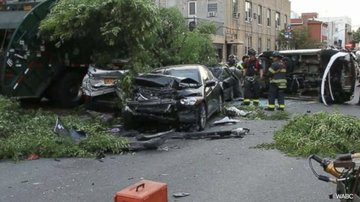
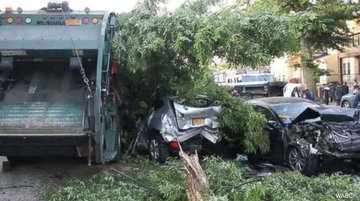

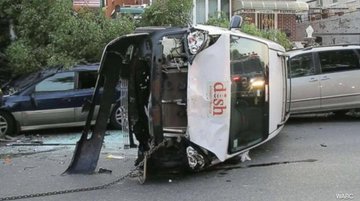
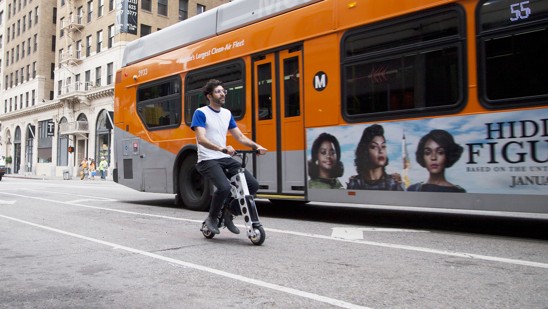

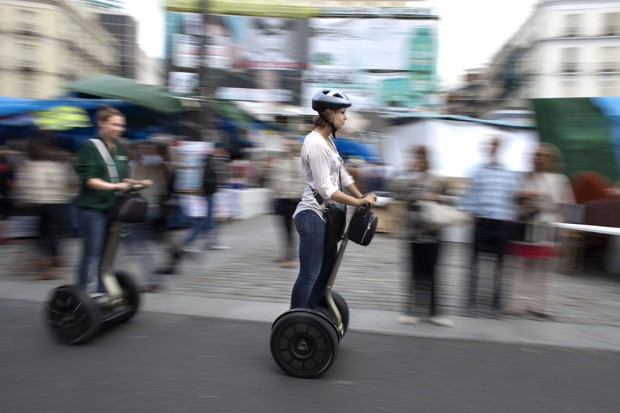

Comments
Post a Comment